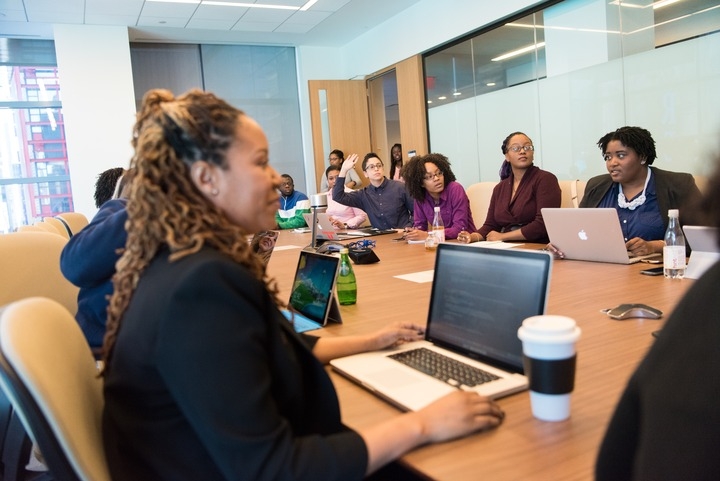
Table of Contents
These skills go beyond subject matter expertise and encompass the ability to connect with participants, facilitate learning, and create a positive and engaging training environment. Here are some key skills that every effective trainer should possess: Strong communication skills: Effective trainers are skilled communicators who can articulate information clearly and concisely. They use a variety of communication techniques such as active listening, questioning, and providing feedback to ensure that participants understand and retain the content. This includes being open to feedback and making necessary changes to enhance the learning experience. Empathy and emotional intelligence: Trainers with empathy and emotional intelligence can connect with participants on a deeper level. They understand the unique challenges and emotions that participants may experience during the training process and create a supportive and inclusive environment. Strong facilitation skills: Effective trainers possess strong facilitation skills that enable them to guide discussions, encourage participation, and foster an interactive learning environment. They can manage group dynamics, stimulate critical thinking, and create opportunities for collaboration and knowledge sharing. Time management and organization: Being able to manage time effectively and stay organized is essential for trainers. This helps create a structured and efficient learning experience.

Continuous learning and professional development: Effective trainers are committed to their own learning and professional development. They stay updated with the latest trends, research, and best practices in training and incorporate new techniques and technologies into their sessions. Flexibility in delivery methods: Trainers should be proficient in using a variety of delivery methods and training tools. This includes utilizing multimedia resources, interactive activities, and technology platforms to engage participants and cater to different learning styles. Evaluation and assessment skills: Effective trainers understand the importance of evaluating training outcomes and assessing participants’ progress. They use various assessment methods such as quizzes, assignments, and observations to measure learning effectiveness and make improvements for future sessions.
Active listening: Effective trainers excel in active listening, which involves not only hearing what participants say but also understanding their perspectives, concerns, and learning needs. By attentively listening and demonstrating empathy, trainers can establish rapport and create a safe space for open dialogue and meaningful discussions. Adaptability to diverse audiences: Effective trainers possess the ability to adapt their training approach to meet the needs of diverse audiences. They consider factors such as participants’ background, experience level, learning styles, and cultural differences. This adaptability ensures that the training resonates with all participants and promotes an inclusive learning environment. They anticipate potential issues, think on their feet, and provide timely solutions. By modeling effective problem-solving, trainers inspire participants to develop these essential skills themselves. Interpersonal skills: Building positive relationships and rapport with participants is key to effective training. Trainers with strong interpersonal skills can establish trust, encourage collaboration, and create a supportive learning community. Flexibility in feedback delivery: Providing constructive feedback is an essential skill for trainers. Effective trainers know how to deliver feedback in a way that is constructive, specific, and respectful. They focus on strengths, offer actionable suggestions for improvement, and encourage self-reflection among participants. Presentation skills: Being able to deliver engaging and dynamic presentations is crucial for trainers. Effective trainers use visual aids, storytelling techniques, and interactive elements to capture participants’ attention and make the training memorable. They employ effective body language, vocal variety, and enthusiasm to create an engaging and impactful learning experience.
Confidence and enthusiasm: Effective trainers exude confidence and enthusiasm in their delivery. Their passion for the subject matter and belief in the value of the training shines through, inspiring participants to be engaged and motivated. They create a positive and energized atmosphere that encourages active participation and enhances the overall learning experience. Empathy and active listening: Demonstrating empathy and active listening skills is key to managing difficult trainees. Trainers should make a genuine effort to understand the trainee’s perspective, validate their feelings, and show that their concerns are heard. By actively listening and responding with empathy, trainers can build trust and create a safe space for difficult trainees to express themselves. Addressing underlying issues: It’s important for trainers to address any underlying issues that may contribute to difficult behavior. This could involve providing additional resources, recommending further support, or offering one-on-one coaching sessions. By addressing the root causes, trainers can help difficult trainees overcome challenges and fully engage in the learning process. Encouraging self-reflection: Trainers can encourage difficult trainees to engage in self-reflection. By asking open-ended questions and guiding trainees to reflect on their behavior and its impact, trainers can promote self-awareness and personal growth. This approach empowers difficult trainees to take ownership of their actions and make positive changes.
Collaborative problem-solving: In situations where difficult trainees exhibit resistance or opposition, trainers can adopt a collaborative problem-solving approach. By involving the trainee in identifying solutions and making decisions, trainers empower them to take responsibility for their behavior and actively participate in finding resolutions. Time management and structure: Effective time management and structured training sessions can help manage difficult trainees. Trainers should ensure that training sessions are well-organized, follow a clear agenda, and maintain a steady pace. By providing structure and minimizing downtime, trainers can help prevent disruptive behaviors and maintain the trainees’ focus. Flexibility and adaptability: Trainers should be flexible and adaptable in their approach to managing difficult trainees. Each trainee is unique, and what works for one may not work for another. By being open to adjusting strategies, providing alternative learning methods, and accommodating individual needs, trainers can create an inclusive and supportive learning environment. Continuous communication: Maintaining open and continuous communication with difficult trainees is essential. Trainers should provide regular feedback, both constructive and positive, to help difficult trainees understand their progress and areas for improvement. By fostering ongoing communication, trainers can build trust, address concerns promptly, and reinforce the trainees’ sense of value.
In summary, managing difficult trainees requires a multifaceted approach that includes empathy, active listening, addressing underlying issues, encouraging self-reflection, collaborative problem-solving, effective time management, flexibility, and continuous communication. By implementing these strategies, trainers can effectively handle difficult behaviors, promote personal growth, and create an inclusive and engaging learning environment for all participants. Managing difficult trainees is an opportunity for trainers to support individual development and maximize the overall success of the training program.
Welcome to the exciting world of delivering engaging training sessions! In this course, we will explore the dynamic techniques and strategies that will captivate your audience and create a transformative learning experience. Imagine the thrill of seeing participants fully engaged, hanging on to your every word. Together, we will uncover the secrets to delivering training sessions that leave a lasting impact and inspire genuine enthusiasm. The foundation of a successful training session lies in understanding your audience. Through empathy and genuine connection, we will delve into the hearts and minds of your participants, enabling you to tailor your content to their unique needs and aspirations.

Let your passion shine through! Engaging training sessions are fueled by your authentic enthusiasm. We will explore powerful techniques to ignite your own passion, ensuring that your delivery is infused with energy and excitement. Storytelling is a compelling tool in any trainer’s arsenal. We will delve into the art of storytelling, learning how to weave captivating narratives that not only entertain but also drive home key concepts and inspire real-world application. Embrace the power of interactive activities! We will explore a wide range of interactive exercises, group discussions, and hands-on experiences that will keep your participants actively involved, fostering collaboration and deepening their learning. Master the art of visual aids and multimedia! We will dive into the world of captivating visuals, multimedia presentations, and cutting-edge technology, equipping you with the skills to create visually stunning training materials that enhance engagement. Communication is key! Discover the secrets to delivering clear and concise messages, employing effective verbal and non-verbal communication techniques that ensure your participants grasp and retain the information you share. Harness the power of gamification! We will explore the use of game-based learning, turning training sessions into exciting adventures where participants can acquire new skills and knowledge while having fun.
Create a safe and inclusive learning environment. We will discuss strategies for fostering a supportive atmosphere where every participant feels valued, ensuring that diverse perspectives are acknowledged and respected. Feedback is a gift! We will explore techniques for soliciting feedback and creating opportunities for participants to provide input, allowing you to continuously improve and refine your training sessions. Overcoming challenges and addressing resistance is part of the journey. We will equip you with strategies to handle difficult situations, manage disruptive participants, and adapt your delivery to ensure a positive and engaging training experience for all.
Congratulations! You have now embarked on a transformative journey towards becoming a master of delivering engaging training sessions. Throughout this course, we will provide you with the knowledge, skills, and inspiration to captivate your audience, create meaningful connections, and make a lasting impact in the world of training and development.
Welcome, trainers, to the exhilarating world of developing effective training materials! In this comprehensive course, we embark on a journey filled with boundless excitement and unbridled enthusiasm for crafting transformative learning experiences. Get ready to unlock the true potential of your training materials and ignite a spark of inspiration within your trainees. Before we dive into the depths of developing effective training materials, let’s set the stage for extraordinary success. With fervent passion, we explore the core principles that underpin impactful training. We understand the unique needs of our learners, foster an environment of encouragement and inclusivity, and lay a solid foundation for knowledge acquisition. Together, we’ll create a transformative learning experience that leaves a lasting impact.

As trainers, we possess a limitless wellspring of creativity within us. With uncontainable joy, we embark on the journey of unleashing our imaginative powers. Through innovative approaches, we will explore diverse techniques, engaging activities, and captivating visuals that bring our training materials to life. Let your creative spirit soar as we design materials that inspire, inform, and captivate learners. Engagement is the key to effective learning, and we approach this task with unbridled enthusiasm. With infectious zeal, we dive deep into the art of crafting captivating content. We learn to tell stories that resonate, ask thought-provoking questions, and present information in a way that ignites curiosity and sparks intellectual exploration. Together, we’ll create training materials that ignite a thirst for knowledge. Effective training materials strike a delicate balance between structure and flexibility. Discover strategies for designing materials that provide a clear framework while allowing room for customization and adaptation to diverse learning needs. Explore the art of sequencing content, incorporating interactive elements, and embracing agile approaches. Visuals have the power to evoke emotions and enhance learning experiences. With awe in our hearts, we delve into the realm of designing visually stunning materials. We embrace the principles of color theory, typography, and graphic design, using them to create visually appealing resources that seamlessly communicate information and leave a lasting impression on learners. Training materials that resonate deeply with learners often evoke emotions and connect on a personal level. With sensitivity and empathy, we explore the art of infusing emotions into our materials. We learn to tell stories that touch the heart, use relatable examples that elicit empathy, and create an atmosphere of understanding and support. Together, we’ll build materials that foster emotional connections and drive meaningful learning. Empathy and emotional intelligence are essential components of effective training materials. Explore techniques for fostering empathy, emotional awareness, and interpersonal skills development. Learn how to create opportunities for reflection, empathy-building exercises, and collaborative discussions that promote understanding and connection among learners. Let’s infuse our training materials with emotional intelligence to create a truly impactful and transformative learning journey.
In this digital age, technology opens a world of possibilities for trainers. With a sense of wonder, we embark on a journey to harness technology’s immense potential. We explore interactive platforms, multimedia tools, and virtual simulations that create immersive learning experiences. Let’s embrace technology with open arms and elevate our training materials to new heights. Learning experiences that are immersive and memorable have a lasting impact on learners. Embark on an exploration of the profound potency nestled within experiential learning, the mesmerizing realm of virtual reality, the transformative nature of simulations, and the captivating world of role-playing exercises. Discover how to create transformative experiences that transport learners into real-world scenarios, allowing them to apply knowledge and skills in a practical and engaging manner. Every learner is unique, and we approach this diversity with compassion. With a compassionate heart, we delve into strategies for tailoring our training materials to cater to diverse learning styles, abilities, and cultural backgrounds. Through the creation of inclusive and accessible materials, we foster an environment where every learner feels an unwavering sense of value, genuine engagement, and an empowering atmosphere that fuels their journey towards unlocking their fullest potential. Ethics take center stage in the meticulous craft of training materials. Plunge into the depths of their significance, embracing unwavering integrity, unwavering accuracy, and unwavering respect for intellectual property rights. Explore the ethical considerations entwined with content selection, representation, and the fervent promotion of inclusivity and diversity. Together, let us ensure that our training materials embody the pinnacle of ethical standards, forging a resounding positive impact on learners and society alike. Gone are the days of passive learning. With pure delight, we embrace interactivity as a core element of our training materials. We explore gamification, interactive exercises, and collaborative activities that make learning a joyful and engaging experience. Let’s transform our training materials into interactive playgrounds that spark curiosity and inspire active participation.
As trainers, we constantly seek growth and improvement. With unwavering determination, we dive into the realm of evaluating the impact of our training materials. We learn to assess learning outcomes, gather feedback, and use data-driven insights to refine our materials further. Together, we’ll foster a culture of continuous improvement and ensure that our materials consistently deliver exceptional results. Data-driven insights are invaluable for enhancing training materials. Learn how to collect and analyze data, interpret learning analytics, and derive meaningful conclusions. Discover how data can inform decisions for iterative improvements, personalization, and meeting the evolving needs of learners. Let’s harness the power of data and analytics to drive continuous improvement in our training materials. Trainers thrive in a supportive community of like-minded professionals. With deep gratitude, we embrace the power of collaboration and community. We explore ways to connect with fellow trainers, share best practices, and create a network of support and inspiration. Let’s cultivate a community that nurtures growth, celebrates success, and uplifts each other along this remarkable journey.
As trainers, our growth is a lifelong journey. Embrace a growth mindset that fosters a hunger for continuous learning and improvement. Explore the power of embracing challenges, seeking feedback, and adapting to new methodologies and technologies. Let’s cultivate a mindset that thrives on innovation and keeps our training materials at the forefront of excellence. With a profound sense of accomplishment, we stand at the precipice of transforming the learning landscape. With an arsenal of unwavering passion, boundless creativity, and an unyielding dedication to achieving excellence, step forward confidently and craft training materials that ignite a flame of inspiration, empower learners to embrace their potential, and kindle a profound love for the pursuit of knowledge.
As trainers, our role extends beyond imparting knowledge; it encompasses fostering a genuine connection with our trainees. Building rapport lays the foundation for effective learning experiences, enabling trainees to feel valued, understood, and motivated. In this course, we delve into the art of building rapport, equipping trainers with valuable insights and techniques to establish strong connections with their trainees. Let’s embark on this journey together, infused with enthusiasm and empathy. Imagine stepping into a classroom where the atmosphere is warm and inviting, where trainees feel a sense of belonging. As trainers, our ability to create such an environment hinges on our emotional intelligence. By expressing genuine interest in our trainees’ backgrounds, experiences, and aspirations, we cultivate a rapport that transcends mere teacher-student dynamics. Let us explore the power of empathy, a key ingredient that infuses our training sessions with emotion and authenticity. Effective communication lies at the heart of building rapport. By actively listening and engaging with trainees, we convey respect and validation. Let us discover the art of active listening, understanding that it involves not only hearing the words but also grasping the emotions and perspectives behind them. By acknowledging and responding empathetically to trainees’ concerns, we foster a supportive environment that encourages open dialogue and collaboration. Authenticity is a vital component of building rapport. Trainees appreciate trainers who are genuine, approachable, and transparent. By sharing our own experiences, challenges, and successes, we establish a sense of relatability and create a safe space for trainees to share their thoughts and doubts. Let us embrace vulnerability, allowing our own emotions to shine through, demonstrating that we are not just instructors but fellow learners on this educational journey.

Building rapport extends beyond the training room. We must recognize the diverse cultural backgrounds and individual differences of our trainees. By respecting and embracing diversity, we create an inclusive environment that celebrates uniqueness. Let us explore cultural intelligence and the art of adapting our training methods to cater to diverse learning styles, ensuring that every trainee feels seen, heard, and valued. The power of positive reinforcement cannot be overstated. Trainees thrive in an environment where their efforts and achievements are recognized and appreciated. By offering constructive feedback, encouragement, and praise, we motivate trainees to reach their full potential. Let us infuse our training sessions with positivity, creating an atmosphere that ignites passion and nurtures growth. In our quest to build rapport, we must not overlook the importance of trust. Trust is the bedrock upon which meaningful connections are built. By maintaining confidentiality, honoring commitments, and demonstrating integrity, we instill a sense of trust in our trainees. Let us prioritize ethical conduct, ensuring that our actions align with our words, and thus creating a safe and trusting environment where trainees can flourish. Empowering trainees is a key aspect of building rapport. By encouraging active participation, fostering autonomy, and valuing trainees’ contributions, we enable them to take ownership of their learning journey. Let us embrace a facilitator role, guiding and supporting trainees as they navigate new concepts and challenges. Through empowerment, we unlock their potential and pave the way for personal and professional growth.
As we conclude this course on building rapport with trainees, remember that emotions are the thread that weaves connections together. Infuse your training sessions with passion, empathy, and authenticity. Let us strive to create a transformative experience where trainees not only acquire knowledge but also feel inspired, supported, and connected. Together, we can build meaningful rapport and shape the future of effective training. In the realm of building rapport, body language speaks volumes. Our non-verbal cues can either enhance or hinder our connection with trainees. Let us explore the power of a warm smile, a reassuring touch, and maintaining eye contact to convey attentiveness and approachability. By being mindful of our body language, we create a visual language of empathy and understanding, strengthening the bond with our trainees. The journey of building rapport is a continuous process that requires ongoing effort and adaptability. Each trainee is unique, with their own set of needs and preferences. Let us embrace flexibility in our training methods, tailoring our approach to accommodate different personalities and learning styles. By being responsive and adaptable, we demonstrate our commitment to the growth and success of each trainee. In the digital era, virtual training has become increasingly prevalent. Although physical presence may be absent, the need for rapport remains unchanged. Let us explore innovative ways to foster connections in the virtual space. From icebreakers and interactive exercises to creating a supportive online community, we can bridge the physical gap and create a sense of togetherness, ensuring that distance does not impede rapport-building efforts.
Mistakes and challenges are inevitable in any learning journey. As trainers, we must foster a culture that embraces and learns from them. Let us demonstrate empathy and understanding when trainees encounter difficulties, encouraging them to view setbacks as opportunities for growth. By cultivating a safe and supportive environment, we create the space for trainees to take risks, learn from their experiences, and emerge stronger and more resilient. Building rapport goes beyond the confines of the training program. As trainers, we have the privilege of being mentors and role models for our trainees. Let us inspire them not only through our subject matter expertise but also by exemplifying values such as empathy, integrity, and continuous learning. By embodying these qualities, we leave a lasting impression on our trainees, influencing their own approach to building rapport in their future roles. As we conclude this course, remember that building rapport is an art that requires passion, dedication, and emotional investment. The connections we forge with our trainees have the power to shape their learning experiences and impact their lives. Let us embrace the opportunity to create a positive and transformative environment, where trainees not only gain knowledge but also develop a sense of belonging, trust, and empowerment. Together, we can inspire, motivate, and create lasting bonds that extend far beyond the training room.
Unlocking the power of effective questioning techniques can transform trainers into catalysts of learning. By infusing emotions into the learning process, trainers can captivate their audience, foster engagement, and ignite a spark of curiosity within their learners. In this comprehensive course, we delve into the captivating world of questioning techniques, unveiling the secrets to asking thought-provoking questions that will leave a lasting impact on your trainees. Imagine the thrill of watching your trainees’ eyes light up with excitement as they ponder profound questions. With the right emotional touch, you can create a vibrant learning environment that fuels intellectual curiosity and inspires deeper exploration. Setting the stage for effective questioning starts with establishing a safe and inclusive space where participants feel comfortable expressing their thoughts. Cultivating an atmosphere of trust and respect enables learners to embrace vulnerability, leading to open and honest exchanges. The power of open-ended questions cannot be underestimated. Such questions kindle a sense of intrigue, inviting learners to delve into the depths of their understanding. Delving into the realm of probing questions, we discover a potent tool for uncovering hidden layers of thinking. These questions challenge assumptions, stimulate reflection, and enable trainers to guide their learners towards new insights and perspectives. The emotional impact of probing questions lies in their ability to ignite intellectual curiosity and fuel transformation. Beyond the realm of factual knowledge lies the realm of speculative questions. These enchanting inquiries invite learners to imagine, to dream, and to explore possibilities beyond the known. By embracing the emotional allure of speculative questions, trainers create a captivating space where creativity flourishes, paving the way for innovative thinking.

As trainers, we possess the power to ignite a spark in our learners’ minds through provocative questions. These bold queries challenge conventional wisdom, inviting learners to question the status quo and venture into uncharted territories. By infusing our questions with passion and conviction, we evoke a sense of urgency and drive to push boundaries. Emotions are the thread that weaves through the fabric of effective questioning. By infusing empathy into our questions, we demonstrate a genuine interest in our learners’ experiences and perspectives. Active listening is the heart and soul of effective questioning. By truly hearing our learners’ responses, acknowledging their contributions, and responding with empathy, we cultivate an environment of mutual respect and appreciation. The emotional resonance of active listening nurtures a sense of validation and encourages learners to engage deeply in the learning process. A carefully crafted sequence of questions can guide learners on a transformative journey. By structuring our questions to build upon one another, we create a narrative that leads to self-discovery and growth. This emotional arc within the questioning process amplifies the impact of the learning experience, leaving a lasting imprint on the hearts and minds of our trainees. Timing is a critical element in effective questioning. Skillfully interweaving questions throughout the learning journey, trainers can maintain a steady rhythm, balancing moments of reflection, exploration, and discovery. By intuitively gauging the emotional pulse of the group, we create a symphony of engagement that resonates deeply with our learners.
The power of visualization lies in its ability to evoke emotions and anchor learning experiences. By incorporating visual cues and evocative language into our questions, we transport learners into vivid landscapes of imagination. This multisensory approach heightens emotional engagement, imprinting knowledge and insights more deeply into the minds of our trainees. The art of framing questions allows trainers to guide the focus and direction of the learning experience. By framing questions in a way that inspires introspection, curiosity, and critical thinking, we provoke emotional responses that drive deeper understanding. The elegance of well-framed questions lies in their ability to unlock a cascade of thoughts and emotions. Emotional intelligence is an essential trait for trainers seeking to master questioning techniques. This emotional connection lays the foundation for impactful questioning, empowering trainers to navigate the intricacies of human emotions and intellect. Navigating the vast landscape of questioning techniques, trainers discover the potency of rhetorical questions. These artfully crafted queries captivate attention, inspire reflection, and elicit emotional responses. By skillfully wielding rhetorical questions, trainers harness the power of language to ignite a fire within their learners, stimulating critical thinking and deep introspection. Silence is a powerful ally in the realm of questioning. By allowing moments of thoughtful silence after posing a question, trainers create space for introspection and internal dialogue. In this gentle pause, emotions arise, thoughts crystallize, and new insights emerge. The art of embracing silence amplifies the emotional impact of questioning, nurturing profound learning experiences.
The beauty of questioning lies in its ability to transcend disciplinary boundaries. Whether you are a trainer in academia, business, or any field of expertise, effective questioning techniques bridge the gap between theory and application. By infusing your questions with the appropriate emotional resonance, you unlock the full potential of learning, empowering individuals to make meaningful connections and drive real-world impact. The journey of mastering effective questioning techniques is a dynamic and ever-evolving process. As trainers, we must continually refine our craft, adapt to the diverse needs of our learners, and embrace the infinite possibilities that lie within the art of questioning. The skillful use of emotion in questioning techniques allows trainers to tap into the innate human desire for connection and meaning. By evoking emotions such as curiosity, excitement, empathy, or even a touch of surprise, we engage our learners on a deeper level. These emotional hooks create lasting memories and inspire a genuine thirst for knowledge.
Now, armed with a comprehensive understanding of effective questioning techniques, you are ready to embark on your own transformative journey as a trainer. Embrace the power of emotions, wield the art of questioning, and watch as your learners blossom under your guidance. Together, let us forge a future where the quest for knowledge is ignited by the flames of curiosity and the beauty of human connection. As you step into the realm of effective questioning, remember that the emotions you infuse into your interactions have the potential to shape lives, spark revolutions, and ignite the flames of inspiration. Your journey as a trainer has just begun, and the world awaits the transformative impact of your emotional questioning techniques. In conclusion, the art of effective questioning techniques infused with emotion is a powerful tool in the hands of trainers. By leveraging the emotional impact of questions, we unlock the door to immersive and transformative learning experiences. Let us embrace the inherent power of emotions, weave them into our questions with purpose and care, and embark on a journey of discovery, growth, and connection. As trainers, we have the privilege and responsibility to ignite the flames of curiosity within our learners and guide them towards a future filled with knowledge, compassion, and limitless possibilities.
Welcome, my passionate trainers, to this engaging course on facilitating group discussions. As trainers, your ability to guide and facilitate meaningful conversations is crucial in creating an interactive and collaborative learning environment. Let us explore essential tips that will help you become skilled facilitators of group discussions. Active listening, my attentive facilitators, is the foundation of effective group discussion facilitation. Active listening demonstrates respect, encourages participation, and fosters a safe space for open dialogue. Establishing rapport, my relationship builders, is key to successful group discussions. Create a warm and welcoming atmosphere, making participants feel valued and included. Show genuine interest in their contributions, use their names, and cultivate a sense of belonging within the group. Setting clear objectives, my goal-oriented facilitators, provides focus and direction for group discussions. Clearly communicate the purpose and expected outcomes of the discussion to participants. Having a shared understanding of the objectives helps keep the conversation on track and ensures meaningful engagement.

Creating a safe space, my supportive facilitators, encourages open and honest communication. Encourage respectful dialogue, active listening, and the valuing of different perspectives. Structuring the discussion, my organized facilitators, ensures a productive flow of conversation. Define a clear agenda, establish time limits, and guide the discussion with thoughtful questions. Structure helps maintain focus, encourages participation from all, and allows for a well-rounded exploration of the topic. Active facilitation, my dynamic leaders, involves actively engaging participants and guiding the conversation. Pose thought-provoking questions, encourage deeper exploration, and steer the discussion towards the desired outcomes. Your active facilitation keeps the momentum going and ensures a rich and engaging discussion. Encouraging equal participation, my inclusive facilitators, ensures that all voices are heard. Create opportunities for quieter participants to contribute by actively soliciting their input. Foster an inclusive environment that values and appreciates diverse perspectives, promoting a sense of equity and respect within the group. Managing conflicts, my skilled mediators, is an essential skill in group discussion facilitation. Anticipate and address potential conflicts with sensitivity and objectivity. Guide participants towards constructive resolutions, emphasizing the importance of active listening, empathy, and understanding. Encouraging critical thinking, my thought-provoking facilitators, challenges participants to analyze, question, and evaluate ideas. Pose open-ended questions, encourage evidence-based reasoning, and promote independent thinking. By fostering critical thinking, you empower participants to explore new perspectives and deepen their understanding. Summarizing and synthesizing, my insightful facilitators, consolidate key points and insights throughout the discussion. Summarize the main ideas, connect different perspectives, and highlight commonalities and themes. By providing a concise summary, you reinforce participants’ understanding and encourage further reflection. Closure and reflection, my reflective facilitators, wrap up group discussions with intention and thoughtfulness. Summarize the discussion’s main takeaways, invite participants to share their reflections, and provide closure by linking the discussion back to the objectives. Closing the discussion with reflection fosters deeper learning and personal growth.
Visual aids, my visual communicators, can enhance group discussions by providing additional context and stimulating discussion. Utilize visual aids such as charts, graphs, or images to illustrate key points or present data. Visuals engage participants and encourage them to delve deeper into the topic. Flexibility, my adaptable facilitators, is essential in guiding group discussions. Be open to unexpected shifts in the conversation or emerging topics of interest. Adapt your approach, questions, or activities to accommodate the evolving needs of the group, fostering a dynamic and responsive discussion environment. Encouraging active participation, my engaged facilitators, ensures that everyone has the opportunity to contribute. Pose questions to specific individuals or encourage participants to build upon each other’s ideas. By actively involving all participants, you create a collaborative and inclusive discussion atmosphere. Visual cues and body language, my observant facilitators, play a significant role in group discussions. Pay attention to participants’ non-verbal cues, such as facial expressions or body language, to gauge their engagement and understanding. Adjust your facilitation style or seek clarification when necessary to ensure effective communication. Appreciation and validation, my supportive facilitators, nurture a positive and encouraging discussion environment. Acknowledge and appreciate participants’ contributions, fostering a sense of value and affirmation. By validating diverse perspectives and ideas, you create an atmosphere that promotes active participation and mutual respect. Encouraging reflection, my reflective facilitators, allows participants to process and internalize the discussion’s insights. Provide moments for individual or group reflection, allowing participants to consider how the discussion has impacted their thinking or understanding. Reflection deepens learning and facilitates personal growth. Managing time effectively, my time-conscious facilitators, ensures that discussions stay focused and productive. Set clear time limits for each topic or question and gently guide the conversation if it begins to digress. By respecting the allocated time, you demonstrate professionalism and create a sense of purpose in the discussion. Creating a supportive learning environment, my nurturing facilitators, encourages participants to take risks and share their thoughts openly. Foster a culture of respect, trust, and psychological safety, where diverse opinions are welcomed and valued. By creating a safe space, participants feel comfortable expressing themselves and engaging in meaningful dialogue.
Empowering participants to take ownership, my empowering facilitators, fosters active engagement in the discussion. Encourage participants to take responsibility for their own learning, facilitating self-directed exploration and knowledge sharing. By empowering participants, you create a sense of ownership and investment in the discussion outcomes. Incorporating multi-sensory elements, my multi-dimensional facilitators, adds depth and variety to group discussions. Consider incorporating elements that engage multiple senses, such as videos, audio clips, or hands-on activities. Multi-sensory experiences enhance engagement and cater to diverse learning preferences. Applying active facilitation techniques, my dynamic leaders, keeps the discussion lively and engaging. Use techniques such as probing questions, paraphrasing, or summarizing to stimulate deeper thinking and encourage participants to expand on their ideas. Active facilitation keeps the momentum and energy high throughout the discussion. Continuous improvement, my growth-oriented facilitators, drives your development as a skilled discussion facilitator. Seek feedback from participants, reflect on your facilitation techniques, and explore new approaches or strategies. Embrace a mindset of ongoing improvement, constantly refining your skills to create even more impactful group discussions.
Technology has greatly helped and changed every aspect of our lives, and one of those is the field of training and development. With the advancement of technology, trainers are now equipped with useful tools. Let’s explore some of these remarkable tools and the emotions they evoke.
Virtual Reality (VR): Imagine being transported to any environment, whether it’s a nice city landscape, street, or the beach. VR technology creates immersive experiences that elicit awe and wonder, making learning more memorable and enjoyable. Trainers can use VR to simulate realistic scenarios, enabling learners to practice skills in a safe and controlled environment. Gamification: Games are inherently engaging and can tap into our competitive nature, making learning more fun and exciting. Gamification platforms allow trainers to create interactive quizzes, challenges, and simulations that encourage active participation. The sense of achievement and accomplishment that comes with completing levels or earning points fosters a positive emotional connection to the learning process.

Mobile Learning: The ubiquity of smartphones and tablets has paved the way for mobile learning, enabling trainers to reach learners anytime, anywhere. Mobile apps and platforms provide bite-sized lessons, interactive quizzes, and social learning features. The convenience and accessibility of mobile learning evoke a sense of empowerment and convenience, making learners more eager to engage with the content. Augmented Reality (AR): AR overlays digital information onto the real world, enhancing the learning experience with interactive elements. Trainers can use AR to provide real-time instructions or overlay virtual objects onto physical ones, creating a sense of wonder and fascination. AR-based training tools encourage exploration and experimentation, triggering curiosity and a desire to learn more.
Video Conferencing: In the age of remote work, video conferencing platforms have become invaluable for trainers to conduct virtual training sessions. The ability to see and interact with participants in real-time bridges the physical distance, fostering a sense of connection and community. Learning Management Systems (LMS): LMS platforms act as centralized hubs for trainers to manage, deliver, and track training programs. They offer features such as course creation, progress tracking, and collaboration tools. The efficiency and organization provided by LMS platforms evoke feelings of relief and satisfaction, ensuring that trainers can focus on delivering impactful training instead of administrative tasks.
Interactive Whiteboards: Interactive whiteboards combine the functionality of traditional whiteboards with digital capabilities. Trainers can write, draw, and interact with content, enhancing visual learning and making concepts more tangible. The interactivity and creativity facilitated by interactive whiteboards instill a sense of curiosity and inspiration, encouraging learners to actively participate and explore ideas. Social Learning Platforms: Learning is inherently social, and technology has made it easier than ever for trainers to foster collaboration and knowledge sharing. Social learning platforms allow us to engage in healthy discussions, share opinions, and learn from one another. The sense of belonging and connection cultivated by these platforms promotes a positive emotional experience, as learners realize they are part of a supportive community. Incorporating technology in training opens up a world of possibilities for trainers and learners alike. From virtual reality to social learning platforms, these tools evoke emotions ranging from awe and curiosity to excitement and connection.
Evaluating training effectiveness is a vital responsibility for trainers. We pour our passion and expertise into designing and delivering training programs, with the ultimate goal of making a positive impact on participants’ knowledge, skills, and performance. This essay serves as a guide for trainers, exploring the key considerations and methods for evaluating training effectiveness, evoking a sense of commitment and continuous improvement. The first step in evaluating training effectiveness is to establish clear objectives. We must define the desired outcomes and performance indicators that align with organizational goals. Setting specific, measurable, achievable, relevant, and time-bound (SMART) objectives allows us to assess the extent to which the training program meets its intended goals. Collecting feedback from participants is an essential aspect of evaluation. Surveys, questionnaires, and interviews provide valuable insights into participants’ perceptions, satisfaction, and learning experience. Their feedback helps us understand the impact of the training program on an emotional level, identifying areas of improvement and capturing success stories.

Assessing participants’ knowledge and skills before and after the training program allows us to measure learning outcomes. Pre- and post-training assessments provide quantitative data that demonstrates the growth and improvement achieved through training. This evaluation method instills a sense of achievement and pride in participants, witnessing the progress they have made. Observation during training sessions provides qualitative insights into participants’ engagement, interaction, and application of skills. By observing their behavior, level of participation, and ability to transfer learning to real-life situations, we gain a deeper understanding of the training program’s impact. Observations evoke emotions related to personal growth and transformations that occur during the training process. Tracking key performance indicators (KPIs) is crucial for evaluating the impact of training on organizational performance. By aligning training outcomes with KPIs, such as productivity, customer satisfaction, or sales figures, we can determine the tangible benefits of the training program. This evaluation method highlights the emotional significance of training in driving organizational success. Long-term follow-ups allow us to assess the sustainability of training outcomes. By evaluating participants’ retention of knowledge and continued application of skills over time, we can determine the long-term impact of the training program. This evaluation method evokes a sense of commitment and accountability in participants, as they strive to maintain their growth and development beyond the training period. Engaging stakeholders, such as supervisors or managers, in the evaluation process provides valuable perspectives on the training program’s impact. By seeking their feedback and input, we gain insights into participants’ performance in the workplace, the transfer of learning, and areas for further support or development. Involving stakeholders fosters a sense of collaboration and shared responsibility for training effectiveness. Using technology-based assessments and learning analytics allows us to collect real-time data on participants’ progress and engagement. Online quizzes, interactive exercises, or learning management system (LMS) data provide quantitative insights into learning outcomes, completion rates, and participant engagement. This data-driven evaluation approach enables trainers to make informed decisions and improvements.
Considering the cost-effectiveness of training is crucial for evaluating its impact. By comparing the costs of the training program to its benefits, such as improved performance or reduced turnover, we can determine the return on investment (ROI). This evaluation method evokes emotions related to the value of training investments and its impact on organizational success. Evaluating the trainer’s performance is also a valuable aspect of assessing training effectiveness. Self-reflection, peer feedback, and supervisor evaluations provide insights into the trainer’s delivery style, effectiveness in engaging participants, and ability to facilitate learning. This evaluation method fosters personal growth and continuous improvement for trainers. Benchmarking against industry standards and best practices helps contextualize the evaluation process. By comparing training outcomes and practices to industry benchmarks, we gain insights into the effectiveness of the program relative to other organizations. Benchmarking evokes a sense of competitiveness and a drive for excellence in delivering training. Continuous improvement is a crucial mindset for evaluating training effectiveness. We must embrace feedback, data, and insights gained from evaluation to make necessary adjustments and enhancements to future training programs. Continuous improvement fosters a sense of dedication and a commitment to delivering high-quality training experiences.
In conclusion, evaluating training effectiveness is an ongoing process that requires careful consideration of objectives, participant feedback, knowledge and skills assessments, observations, KPIs, long-term follow-ups, stakeholder engagement, technology-based assessments, cost-effectiveness, trainer evaluation, benchmarking, and continuous improvement. Through these evaluation methods, we strive to make a meaningful impact on participants’ development, organizational performance, and our own growth as trainers. Let us approach the evaluation process with dedication and a passion for continuous improvement, ensuring that our training programs deliver tangible and transformative results.
Managing difficult trainees can be a challenging task for trainers, but with the right strategies, it is possible to navigate these situations effectively. One important strategy is to establish a positive and respectful learning environment from the start. By setting clear expectations and guidelines for behavior, trainers can create a supportive atmosphere where difficult trainees feel valued and understood. Another strategy is to practice active listening. When difficult trainees express their concerns or frustrations, it is crucial for trainers to listen attentively and empathetically. By showing genuine interest and understanding, trainers can help diffuse tension and build rapport with trainees, making them more receptive to feedback and guidance.

Trainers should also tailor their approach to meet the individual needs of difficult trainees. This involves identifying their preferred learning styles and adapting training methods accordingly. By catering to their unique strengths and preferences, trainers can increase their engagement and motivation, making the learning experience more enjoyable for everyone. When faced with difficult behaviors, trainers should address them promptly and professionally. This may involve having private conversations to discuss the issues, providing constructive feedback, and offering guidance on how to improve. By dealing with difficult behaviors directly and in a non-confrontational manner, trainers can help trainees understand the impact of their actions and work towards positive change. It is also important for trainers to provide ongoing support and encouragement to difficult trainees. By recognizing their progress and celebrating their achievements, trainers can boost their confidence and motivation. This positive reinforcement can inspire trainees to overcome challenges and strive for continuous improvement. Trainers can offer personalized guidance and support to help them navigate specific challenges or areas of improvement. This individualized attention shows a commitment to their growth and development, fostering a sense of trust and partnership.
Trainers should also encourage collaboration and peer support among trainees. By facilitating group activities and discussions, trainers can create opportunities for difficult trainees to learn from their peers and gain different perspectives. This collaborative environment promotes teamwork and a sense of community, which can help alleviate difficult behaviors. Lastly, trainers should practice self-care and maintain their own emotional well-being. Managing difficult trainees can be emotionally draining, so trainers need to prioritize self-care activities such as relaxation techniques, seeking support from colleagues, or participating in professional development programs. By taking care of themselves, trainers can approach difficult situations with a clear mind and renewed energy. Trainers should also consider the underlying reasons behind difficult behaviors. Difficult trainees may be struggling with personal issues, lack of confidence, or resistance to change. By taking the time to understand their motivations and concerns, trainers can approach them with empathy and offer targeted support. This understanding can help trainers tailor their strategies and interventions to address the root causes of difficult behaviors, leading to more effective outcomes.
Another important strategy is to provide clear and constructive feedback to difficult trainees. Trainers should focus on specific behaviors or areas for improvement, highlighting both strengths and areas of development. It is crucial to deliver feedback in a respectful and non-judgmental manner, emphasizing growth and learning rather than criticism. By offering actionable feedback, trainers can guide difficult trainees towards positive changes in their behavior and performance. Trainers should also consider implementing interactive and engaging training methods to keep difficult trainees actively involved. Incorporating hands-on activities, group discussions, and real-world examples can capture their interest and make the learning experience more enjoyable. By fostering an interactive and dynamic training environment, trainers can reduce resistance and enhance the participation of difficult trainees. Furthermore, trainers should maintain a flexible and adaptable approach when dealing with difficult trainees. By adjusting the training methods, pacing, or content to suit the trainees’ requirements, trainers can create a more inclusive and accommodating learning environment. In situations where difficult trainees exhibit disruptive behavior, trainers should have clear guidelines and consequences in place. However, it is essential to balance discipline with understanding and support. Trainers should communicate the expectations and consequences in a professional and compassionate manner, emphasizing the importance of a positive and cooperative training environment.
Finally, trainers should continuously evaluate and reflect on their own training approaches. By seeking feedback from trainees, colleagues, or supervisors, trainers can gain valuable insights into their strengths and areas for improvement. This reflective practice allows trainers to refine their strategies and techniques, enhancing their ability to effectively manage difficult trainees.By implementing these additional strategies, trainers can further enhance their skills in managing difficult trainees. Creating a positive and supportive learning environment, practicing active listening, providing individualized support, and maintaining a flexible approach are key to fostering growth and development even with challenging participants. Through ongoing self-reflection and a commitment to continuous improvement, trainers can navigate difficult situations with professionalism, empathy, and success.
Welcome, my fellow trainer, to an exciting journey of continuous professional development! In this course, we will explore the dynamic techniques and strategies that will captivate your audience and create a transformative learning experience. Imagine the thrill of seeing participants fully engaged, hanging on to your every word. Together, we will embark on a heartfelt quest for personal and professional growth, paving the way for remarkable achievements and profound impact. Passion is the fire that fuels every great trainer. Throughout this course, we will celebrate your unwavering dedication to training and amplify it with a surge of enthusiasm, unwavering commitment, and an insatiable hunger for learning and improvement. Let us pause for a moment of reflection. We will delve deep into your experiences, embracing both the triumphs and the challenges. Through introspection and self-discovery, you will uncover hidden gems of insight that will shape your journey and transform your training approach. Embrace the spirit of lifelong learning, dear trainer! Together, we will venture into a captivating world of diverse learning opportunities. From immersive workshops to thought-provoking seminars, from enlightening webinars to awe-inspiring conferences, we will navigate this vast ocean of knowledge to help you soar to new heights. Remember, you are not alone on this voyage. As we explore the depths of professional development, we will create a vibrant community of trainers where collaboration thrives. Engaging discussions, networking events, and mentorship opportunities will ignite the spark of camaraderie, allowing us to learn from one another’s triumphs and challenges.

Adaptability is the key to your success as a trainer. Together, we will brave the ever-changing tides of training methodologies, instructional design principles, and technological advancements. Embrace flexibility and tailor your approach to the unique needs of your participants, setting sail towards exceptional training experiences. Let us set our compass towards the shores of knowledge. The realm of educational research will be our guiding light. Uncover the treasures of evidence-based practices, delve into the latest findings, and weave them into the fabric of your training sessions. By grounding your delivery in research, you will create a profound impact on the minds of your participants. In this odyssey of growth, feedback shall be our true north. Embrace the invaluable insights that come from participant evaluations, peer assessments, and self-reflections. Harness the power of feedback as a guiding beacon, illuminating your path to continuous refinement and enhancement.
Release your creativity and embrace innovation, dear trainer! Dive into the depths of inventive training techniques, harness the magic of gamification, immerse your participants in experiential learning, and harness the power of cutting-edge technology. Through innovation, you will create captivating training experiences that spark curiosity, ignite imagination, and facilitate lasting transformations. Within your hands lies the ability to inspire hearts and minds. Master the art of inspirational training, painting vivid pictures with your words, and captivating your audience with compelling stories. Empower your participants to unleash their potential and embark on remarkable journeys of growth. Along our voyage, let us pause to celebrate your milestones and achievements. Set personal goals, acknowledge your successes, and revel in the progress you make. By recognising and appreciating your growth, you will fuel the fire of passion and commitment to lifelong learning. </p
Congratulations, dear trainer, on embarking on this extraordinary odyssey of continuous professional development! As you navigate this course, trust in your abilities, embrace the opportunities that arise, and embrace the transformative power of your journey. May your passion burn brightly as you illuminate the lives of those you train, leaving an indelible mark on the world.





